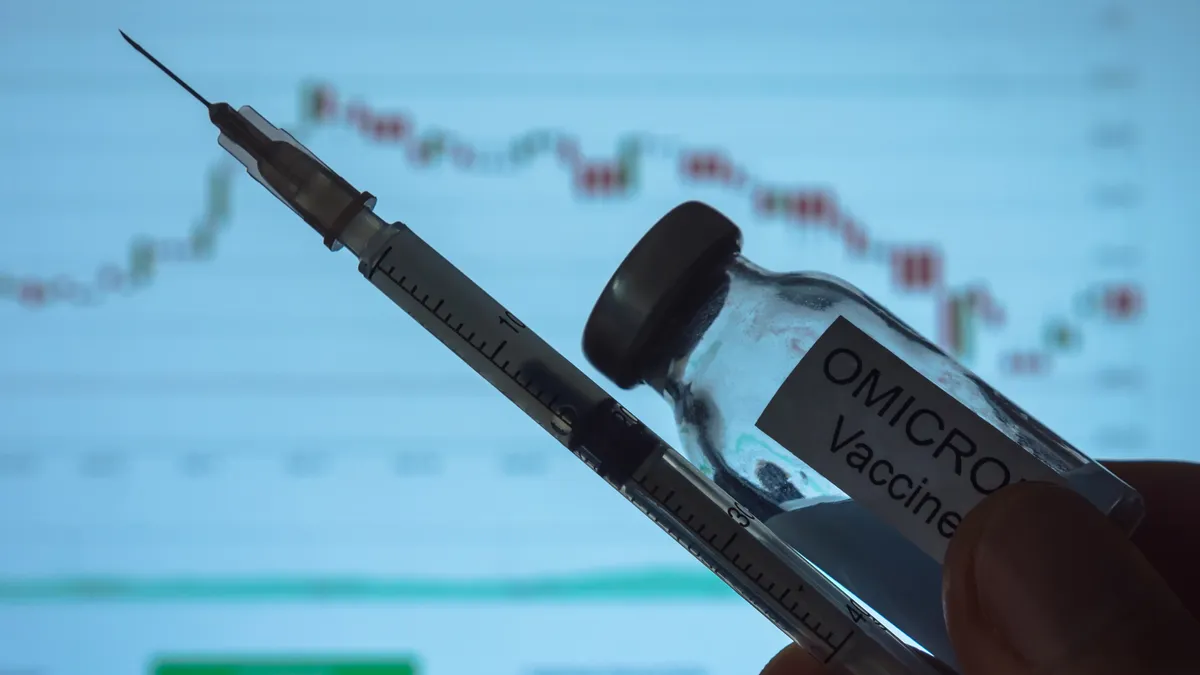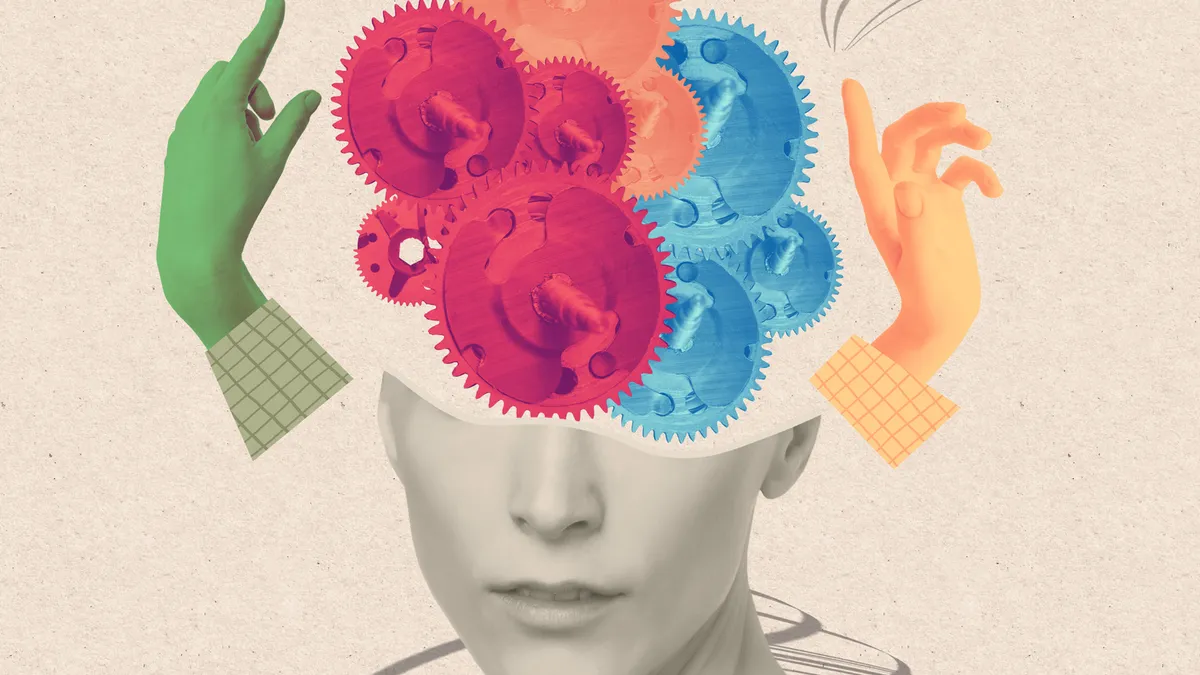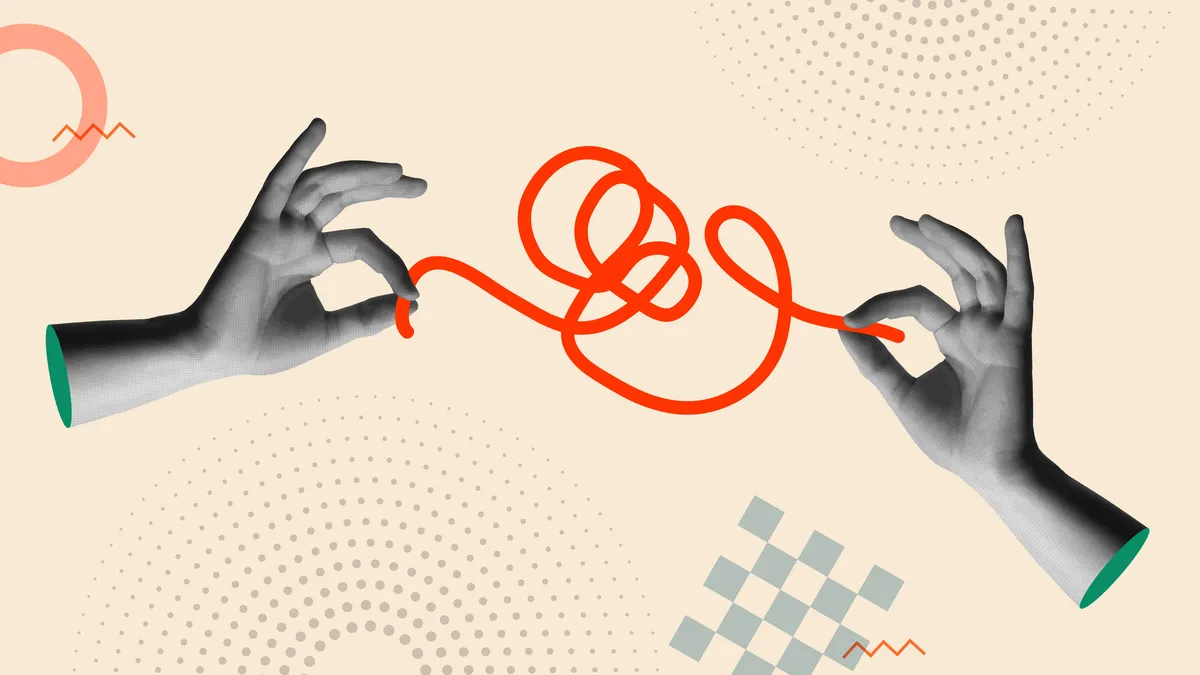Wearable Healthcare: Beyond Smartwatches and Fitness Trackers
Trend Watch: Next-gen wearable healthcare will be nano sensors.
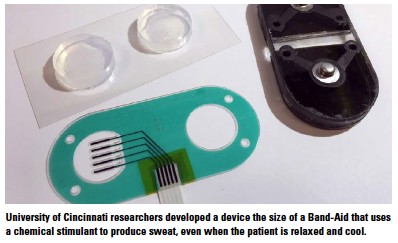 ABI Research forecasts that wearable healthcare, including healthcare devices, sports, fitness, and wellness trackers will continue to dominate the wearables market and will exceed revenue of $10 billion in 2022. Healthcare will shrink in size and change in form factor type. Unlike today’s bulky health related devices, ultra-thin and ultra-soft sensors with software analytics make next-generation wearables smarter and more useful.
ABI Research forecasts that wearable healthcare, including healthcare devices, sports, fitness, and wellness trackers will continue to dominate the wearables market and will exceed revenue of $10 billion in 2022. Healthcare will shrink in size and change in form factor type. Unlike today’s bulky health related devices, ultra-thin and ultra-soft sensors with software analytics make next-generation wearables smarter and more useful.
For example, the electronic tattoo developed by Rotex performs many of the typical functions of smart watches and fitness trackers. Not only does it monitor health conditions in real time, it also provides a different means to control devices as an integral part of IoT. The low cost and disposability of the electronic tattoos further the use cases and value appeal of wearable technology, especially for customers who are price sensitive.
Replacing costly doctor visits and painful lab-based blood tests, non-invasive sweat sensors can measure a set of key biometrics from a single bead of sweat. A few companies are working to capture the sweat sensor market, such as Eccrine System, GraphWear Technologies, and Kenzen.
While the miniaturized health sensors enable consumers to monitor health conditions by themselves and be aware of their own healthcare, they also extend to the enterprise market by delivering superior analytics for clinical and medical research. Once privacy and security concerns are addressed and standardization in health communication protocols are put into place, the next-gen of wearable healthcare will be ushered in.
These findings are from ABI Research’s Hot Tech Innovators: Wearables report.
Breathable, Flexible Electronics Allow Long-Term, On-Skin Health Monitoring
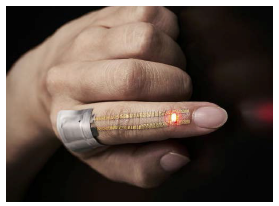 At the University of Tokyo in Japan researchers have developed a new method of producing stretchable electronics that are breathable, don’t irritate the skin, and weigh next to nothing. The development may lead to ubiquitous use of on-skin electronic sensors to monitor the body continuously in a variety of places and ways. The research team tested the technology by having volunteers wear an electronic single lead ECG sensor on their finger, demonstrating that even a week of use did not lead to discomfort and the participants even forgot they had a device attached to their skin.
At the University of Tokyo in Japan researchers have developed a new method of producing stretchable electronics that are breathable, don’t irritate the skin, and weigh next to nothing. The development may lead to ubiquitous use of on-skin electronic sensors to monitor the body continuously in a variety of places and ways. The research team tested the technology by having volunteers wear an electronic single lead ECG sensor on their finger, demonstrating that even a week of use did not lead to discomfort and the participants even forgot they had a device attached to their skin.
The technology relies on building nanoscale meshes, made of polyvinyl alcohol that, when applied, dissolve and allow air to pass through, something that was often lacking in film-based electronics. This helps to allow the electronics to be used for long periods of time since a lack of air circulation can lead to irritation, inflammation, and even infection. A thin layer of gold nanofibers is used to transmit electric current through the device, which remains on the skin following the lamination of the device onto the skin.
In a laboratory study, the researchers demonstrated the long-term integrity of electronics produced this way, bending and pulling on the devices repeatedly more than 10,000 times.
Google Glass Coaches Autistic Children
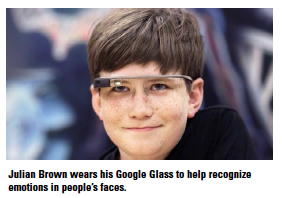 Like many autistic children, Julian Brown has trouble reading emotions in people’s faces, one of the biggest challenges for people with the neurological disorder.
Like many autistic children, Julian Brown has trouble reading emotions in people’s faces, one of the biggest challenges for people with the neurological disorder.
Now the 10-year-old San Jose boy is getting help from “autism glass" — an experimental device that records and analyzes faces in real time and alerts him to the emotions people are expressing.
The facial recognition software was developed at Stanford University and runs on Google Glass, a computerized headset with a front-facing camera and a tiny display just above the right eye. Julian is one of about 100 autistic children participating in a Stanford study to see if “autism glass" therapy can improve their ability to interpret facial expressions.
Julian wears the device each day for three 20-minute sessions when he interacts with family members face to face — talking, playing games, eating meals. The program runs on a smartphone, which records the sessions.
When the device’s camera detects an emotion such as happiness or sadness, Julian sees the word “happy" or “sad" — or a corresponding “emoji" — flash on the glass display. The device also tests his ability to read facial expressions.
“The autism glass program is meant to teach children with autism how to understand what a face is telling them," says Dennis Wall, who directs the Stanford School of Medicine’s Wall Lab, which is running the study.
Stanford student Catalin Voss and researcher Nick Haber developed the technology to track faces and detect emotions in a wide range of people and settings. Google provided about 35 Google Glass devices to Stanford, but otherwise hasn’t been involved in the project. The Silicon Valley tech giant stopped producing the headset last year after it failed to gain traction, but the device found new life among medical researchers.
Brain Power, a Cambridge, Mass.-based startup, is also developing Google Glass-based applications to help children with autism improve their face-reading abilities and social skills.
Autism advocates are excited that researchers are developing technologies to help the estimated one in 68 American children diagnosed with autism spectrum disorder.
Ultrasound and Microbubbles for Targeted Chemotherapy Delivery
Researchers in Norway have developed a chemotherapy delivery system consisting of microbubbles containing drug-loaded nanoparticles. When the researchers apply ultrasound to the microbubbles in a tumor, the microbubbles burst, releasing the nanoparticles and the chemotherapeutic drug.
The Norwegian team encapsulated a chemotherapeutic drug into nanoparticles, and then incorporated the nanoparticles into the surface of small bubbles, called microbubbles. When the researchers injected the microbubbles into the blood stream in mice, and then stimulated their tumors using ultrasound, the bubbles burst, releasing the nanoparticles into the tumor.
Vibrations from the ultrasound make the blood vessels in the tumor more porous. This helps push the nanoparticles further into the tumor, helping them to reach cells further away from the blood vessels.
“By using ultrasound to transport the chemotherapy-laden nanoparticles into the tumors, our research on mice has shown that we can deliver about 250 times more of the drug to the tumor compared to just injecting chemotherapy into the bloodstream alone," says Sofie Snipstad, a researcher involved in the study.
Using the technique, the researchers appear to have killed the cancer completely in several mice, as their tumors disappeared and didn’t return.
“This is an exciting technology that has shown very promising results," Ms. Snipstad says. “That the first results from our tests in mice are so good and that the medicine does such a good job right from the start is very promising."
The study, Ultrasound Improves the Delivery and Therapeutic Effect of Nanoparticle-Stabilized Microbubbles in Breast Cancer Xenografts, was published in Ultrasound in Medicine and Biology journal in August.
New Apple Watch Hopes To Alert Heart Patients to Problems
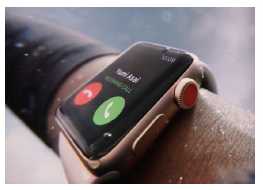 Apple’s launch of three new iPhones and its Apple Watch Series 3 may not have direct implications to pharma, but the upgraded smartwatch confirms that Apple is serious about being a player in the healthcare arena, and exemplifies the trend of technology companies creating digital health tools for improving patient outcomes.
Apple’s launch of three new iPhones and its Apple Watch Series 3 may not have direct implications to pharma, but the upgraded smartwatch confirms that Apple is serious about being a player in the healthcare arena, and exemplifies the trend of technology companies creating digital health tools for improving patient outcomes.
The new Apple Watch Series 3 gives users more real-time information about their heart than ever, and Apple hopes that it will also be able to alert users to potentially concerning heart beat patterns. The company is working with heart experts at Stanford University to study and analyze the data; they’re hoping to come up with algorithms to interpret the heart rate patterns so they can distinguish the worrisome rhythms from the not-so-concerning ones. (PV)









